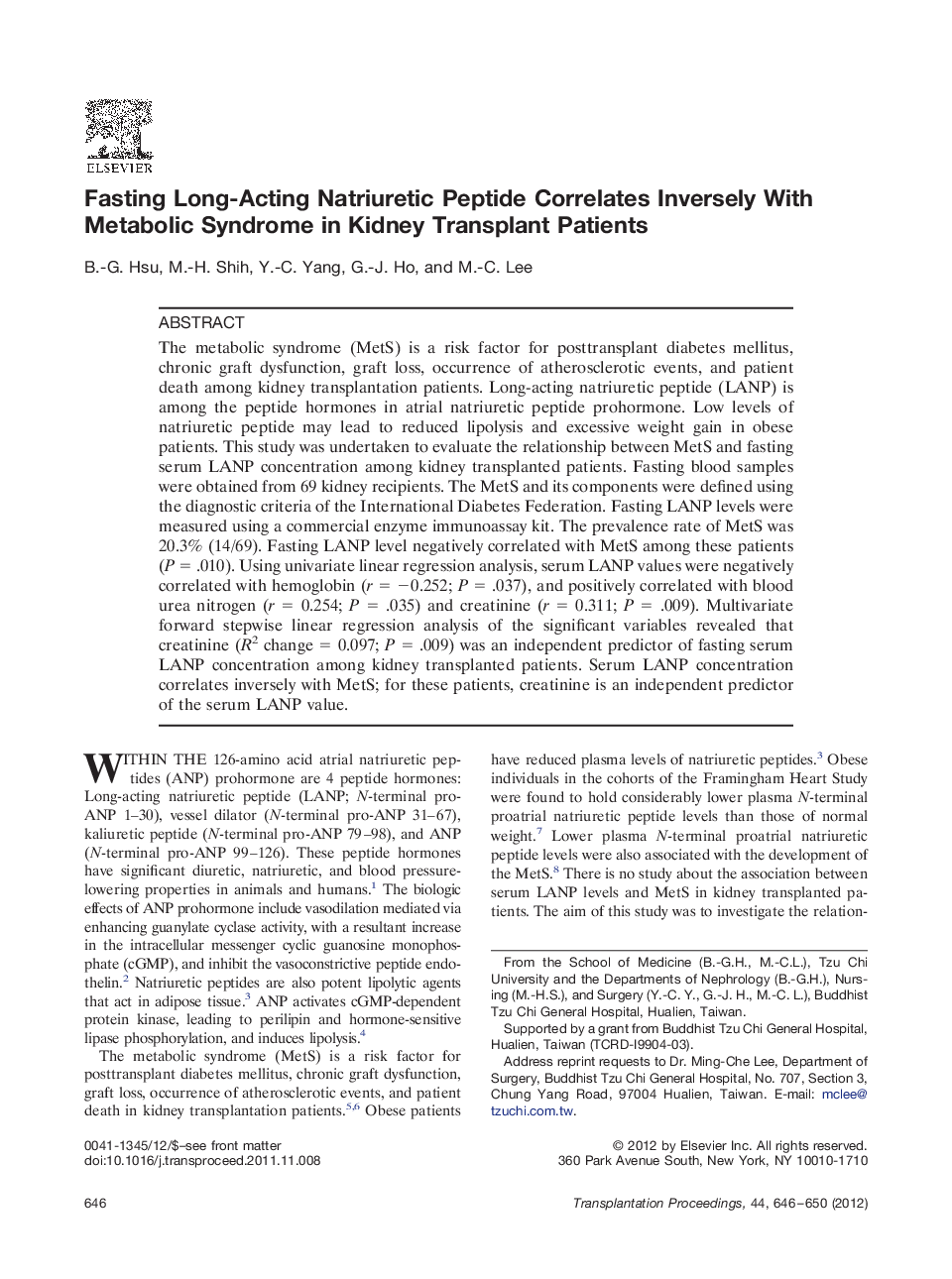| Article ID | Journal | Published Year | Pages | File Type |
|---|---|---|---|---|
| 4257761 | Transplantation Proceedings | 2012 | 5 Pages |
The metabolic syndrome (MetS) is a risk factor for posttransplant diabetes mellitus, chronic graft dysfunction, graft loss, occurrence of atherosclerotic events, and patient death among kidney transplantation patients. Long-acting natriuretic peptide (LANP) is among the peptide hormones in atrial natriuretic peptide prohormone. Low levels of natriuretic peptide may lead to reduced lipolysis and excessive weight gain in obese patients. This study was undertaken to evaluate the relationship between MetS and fasting serum LANP concentration among kidney transplanted patients. Fasting blood samples were obtained from 69 kidney recipients. The MetS and its components were defined using the diagnostic criteria of the International Diabetes Federation. Fasting LANP levels were measured using a commercial enzyme immunoassay kit. The prevalence rate of MetS was 20.3% (14/69). Fasting LANP level negatively correlated with MetS among these patients (P = .010). Using univariate linear regression analysis, serum LANP values were negatively correlated with hemoglobin (r = −0.252; P = .037), and positively correlated with blood urea nitrogen (r = 0.254; P = .035) and creatinine (r = 0.311; P = .009). Multivariate forward stepwise linear regression analysis of the significant variables revealed that creatinine (R2 change = 0.097; P = .009) was an independent predictor of fasting serum LANP concentration among kidney transplanted patients. Serum LANP concentration correlates inversely with MetS; for these patients, creatinine is an independent predictor of the serum LANP value.
